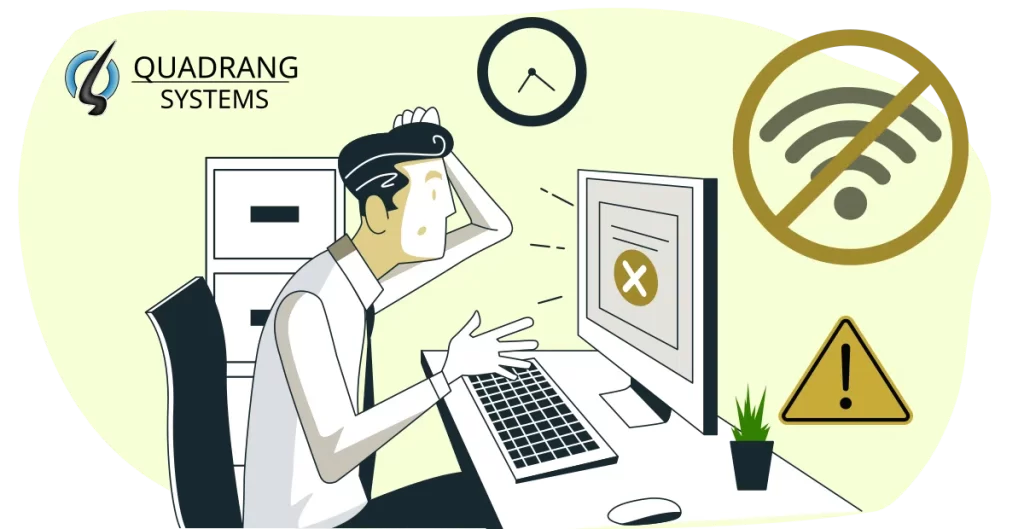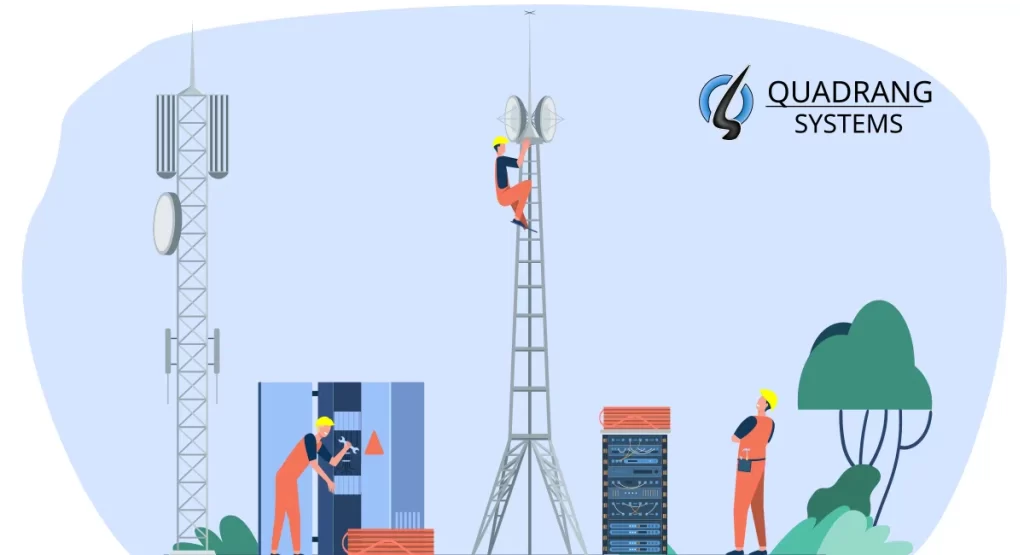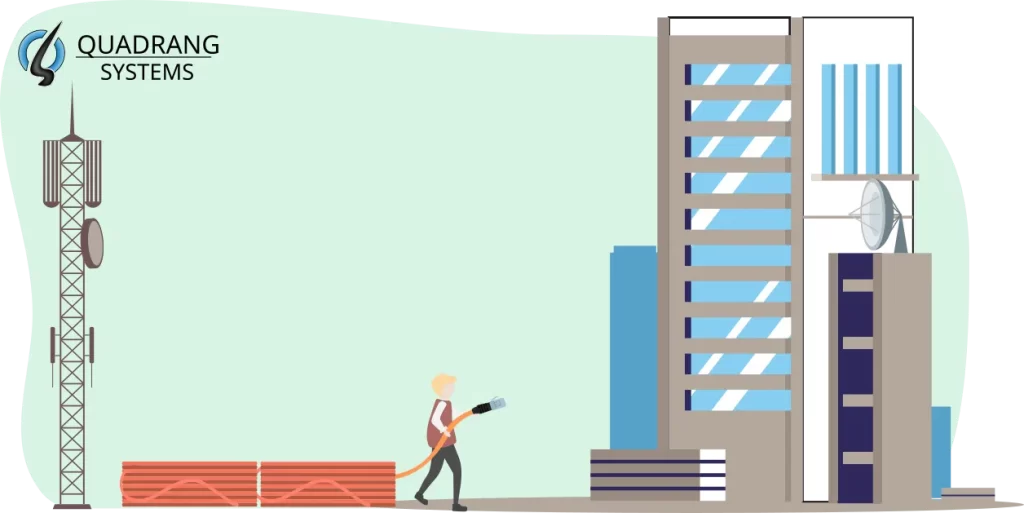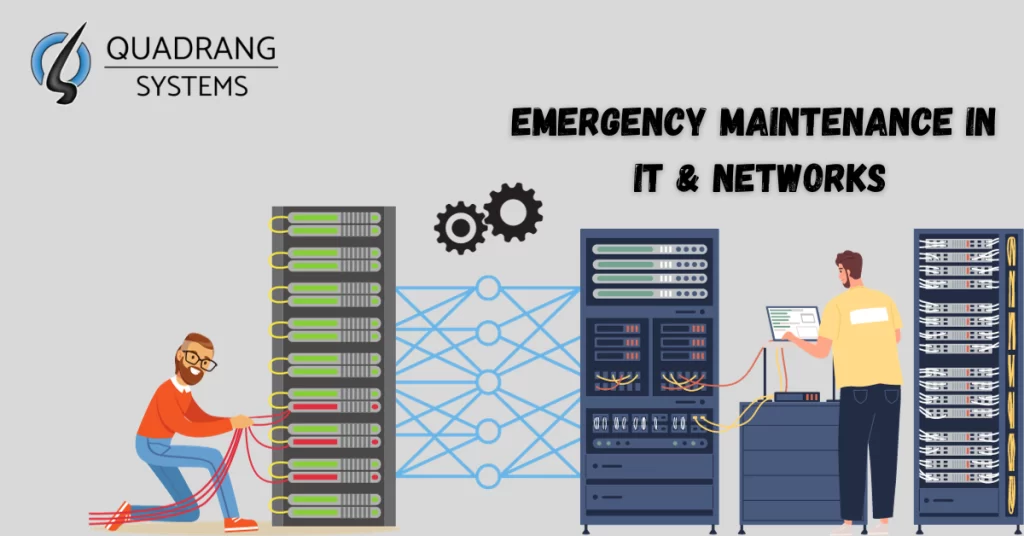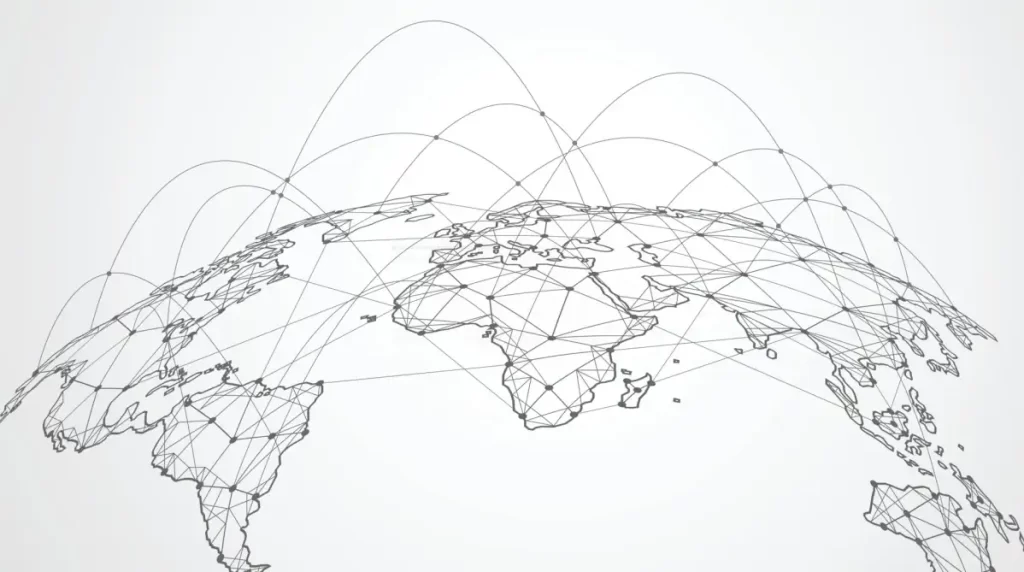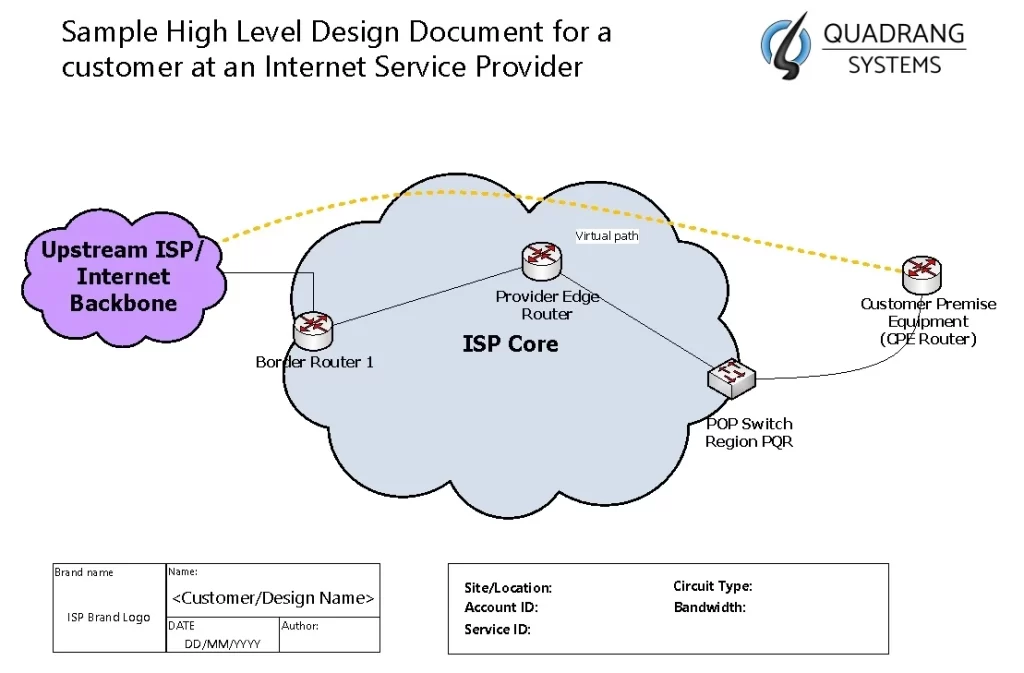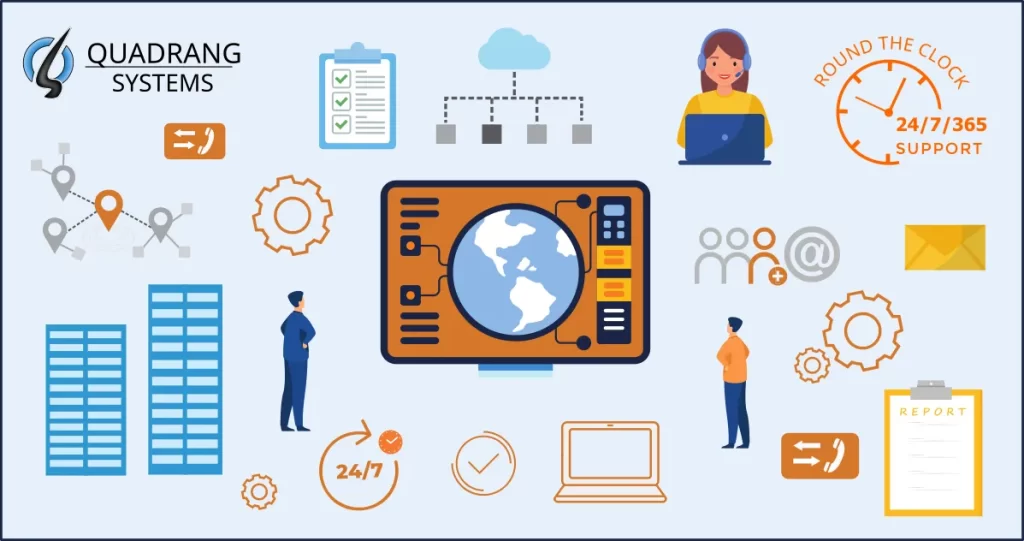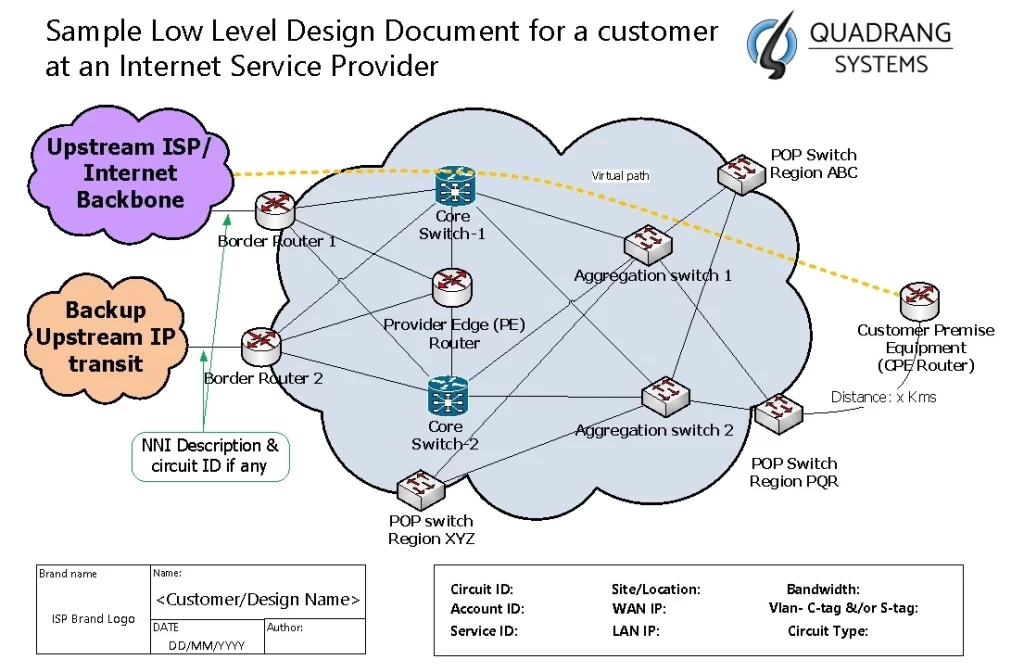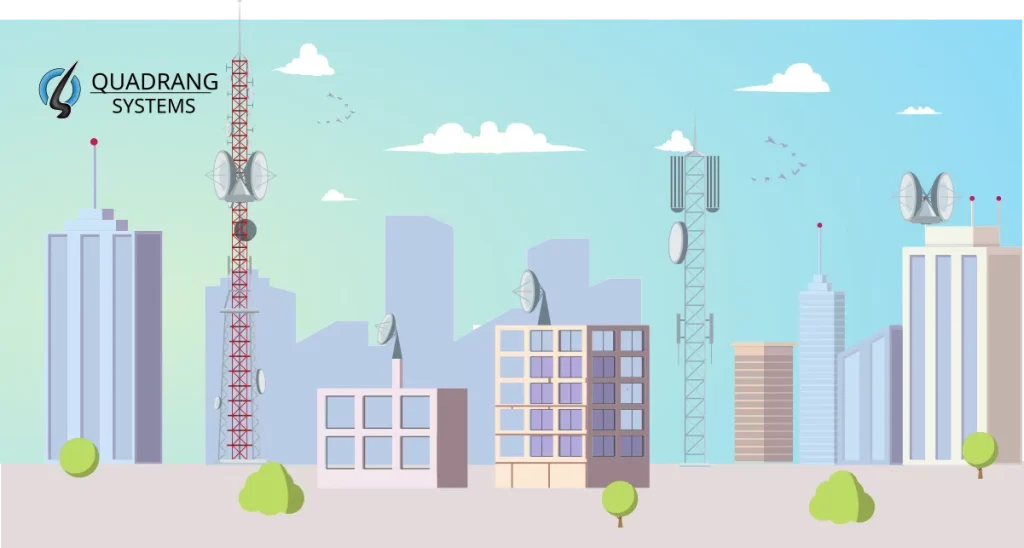10 common Reasons and Causes of Network outages
Network outages interrupt and disrupt connectivity and can have major impacts on business operations, whether from small hiccups to full systemic failures. Myriad technical issues, software bugs, environmental factors, human errors or malicious actions trigger these disruptions that hamper productivity and revenue. By mapping risks across infrastructure dependencies, organizations strategically harden architectures. These are done through redundancy, heightened security, failover mechanisms and component upgrades to minimize outage frequency, duration and impact.
Proactive resilience preparation far outweighs reactive scramble once systems crash, making organizational stability and continuity a priority worth investment. By understanding the reasons networks fail, companies can take preventative steps and build resiliency.
Below are the several common causes of network outage affecting various equipment/devices, cables or communications infrastructure. Some of the causes encompass under more than one category so they account under those categories
1. Software Issues
Software bugs, outdated patches leaving vulnerabilities, improper MTU sizes, TCP packet mishandling, spanning tree loops, routing problems, suboptimal network paths, VLAN misconfigurations, and wrong network parameters can trigger network outages. When critical equipment reaches end-of-life with no more software updates, lack of support also causes failures.
- Software bug or outdated patch
- MTU size issues
- TCP mss issues
- Spanning Tree loop related issues
- Routing issues
- Vlan / QinQ tagging issues
- Suboptimal path
- Wrong parameters or values set
- Software out of support, end of life
2. Hardware Issues
Hardware at or past recommended lifecycles lacks resilience and fails more often. Outdated firmware, software defects, failing components like network cards or SFPs, overheating from high loads or inadequate cooling, power fluctuations, and physical damage from vandalism or mishandling all trigger outages.
- Hardware out of support, end of life
- Outdated firmware
- Software bug
- Failing card/motherboard/SFP
- Physical damage
- Power fluctuation or insufficient power
- Overheating or lack of air conditioning
- High load or High CPU/memory of the equipment
- Vandalism
3. Human Error Issues
Common human errors like misconfigurations, incorrect settings, forgetting previous working states before changes, wrong connections, unplugging operational cables, and unintentional side-effect inducing changes unintentionally trigger outages.
- Misconfiguration
- Incorrect settings
- Forgetting to save previous config
- Wrong cabling or wrong connection
- Mistake of any form
- Unplugging wrong cable
- Configuration side-effects
4. Electrical Issues
From blown fuses, power fluctuations, and insufficient voltage to battery failure and wrongly-wired devices, electrical issues propagate failure. UPS and surge protector failures during outages coupled with lack of backups for mission-critical equipment lead to disruption.
- Power tripped, blown fuse or short circuit
- Power outage
- Voltage fluctuations
- Low or insufficient voltage/current
- Wrong power input or wrong power cable
- Insufficient battery or UPS/Inverter goiny faulty
- Electrical fault in one device causing other to fail
5. Network Traffic Congestion
Oversubscribing bandwidth across too many users and devices congests networks to the point of failure. Sudden traffic spikes from events like DDOS attacks overwhelm capacity. Networks with underprovisioned bandwidth as needs evolve similarly overload during peak usage.
- Oversubscribing bandwidth of multiple customers/users over one link
- Sudden surge of traffic
- Low bandwidth link
- Old link which wasn’t upgraded from long time
- DDOS or broadcast/flooding over network
6. Physical Damage Issues
Accidental cable disconnections from office relocations or construction increase downtime. Rodents chewing through poorly protected cable runs also interrupts connectivity essential to operations.
- Cable crushed or pinched under load or at turns
- Equipment in unsecure enclosure
- Exposed cables
- Civil/construction/road works
- Exposure to fire
- Exposure to corrosive chemicals
7. Weather Issues
Extreme weather threatens infrastructure integrity through moisture, rapid temperature shifts from cold to heat stressing materials, lightning strikes, pollution, and more. Prolonged exposure degrades once weatherproof transmission media.
- Rainwater ingress or equipment drenched or flooded away
- Lightning strikes
- Equipment chilling in snow or snow precipitation
- Exposure to harsh sunlight and heat
8. Design Issues
Single points of failure in networks crumble with component failure. Traffic congestion results from suboptimal paths lacking capacity planning. Insufficient redundancy and backup mechanisms mean more extensive downtimes during outages while manual failover delays restoration versus modern automated alternatives.
- Single point of failure
- Taking sub optimal path (logical or physical)
- Not having backup where necessary
- Using outdated or poor quality hardware
- Opting for manual instead of auto failover or backup
9. Security Issues
Compromised credentials let intruders unleash malware, steal data, or ransom critical systems via encryption. Distributed denial of service (DDOS) attacks overwhelm infrastructure by flooding traffic. Without robust perimeter security, patching, multi-factor authentication, and redundancy, outages allow compromise.
- DDOS attack
- Malware, virus, botnet or other malicious code
- Hacking attack by bad actors
- Compromised user credentials
- Phishing attack to gain unauthorized access
- Lack of physical security or compromised physical security
10. Combination of Issues
Simultaneous issues magnify outage impacts through cascading failures. Initial incidents spawn secondary conditions made worse by interconnectedness. Holistic evaluations uncover Dependencies while targeted hardening of critical failure points adds redundancy and alternative paths to lessen crippling system crashes.
By knowing outage causes ranging from code defects to power and mechanical destruction, organizations identify infrastructure vulnerabilities. Comprehensive assessments pinpoint weakness concentration. Strategic redundancy, failover mechanisms and component fortification transforms unreliable architectures into robust environments with minimized downtime impact.


